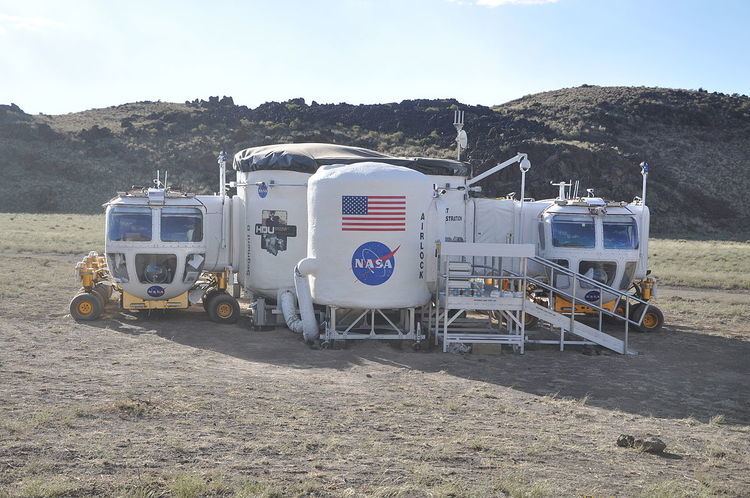 | ||
The Space Exploration Vehicle (SEV) is a modular multi-mission vehicle concept developed by NASA. It would consist of a pressurized cabin that can be mated either with a wheeled chassis to form a rover for planetary surface exploration (on the Moon and elsewhere) or to a flying platform for open space missions such as servicing satellites and missions to near-Earth asteroids. The concept evolved from the Lunar Electric Rover (LER) concept, which in turn was a development of the Small Pressurized Rover (SPR) concept.
Contents
Concept vehicles of the Lunar Electric Rover (and later, the SEV) were tested during the Desert Research and Technology Studies in 2008, 2009, 2010 and 2011. One of the LER concept vehicles took part in the presidential inauguration parade of Barack Obama in 2009. Research and testing continued in 2012 in the Johnson Space Center with a mock-up of a free-flying SEV simulating a mission to an asteroid.
Development of the SEV has continued, producing variants called the Multi-Mission Space Exploration Vehicle (MMSEV) and in 2013 a cabin for a possible lunar lander called the Alternate MMSEV (AMMSEV).
The SEV is developed together with other projects under the Advanced Explorations Systems Program. The program's budget for FY 2010 was $152.9 million.
Features
The SEV is the size of a small pickup truck, it has 12 wheels, and can house two astronauts for up to two weeks. The SEV consists of a chassis and cabin module. The SEV will allow the attachment of tools such as cranes, cable reels, backhoes and winches. Designed for 2, this vehicle is capable of supporting 4 in an emergency. With wheels that can pivot 360 degrees, the SEV is able to drive in any direction. Astronauts can enter and exit without space suits directly from an airlock docking hatch, or through a suitport without the need to depressurize the habitat module.
The pressurized module contains a small bathroom with privacy curtains and a shower head producing a water mist for sponge baths. It also contains cabinets for tools, workbench areas and two crew seats that can fold back into beds.
